Wiki Project: Turbo Time (HuCard)
By Mento 0 Comments
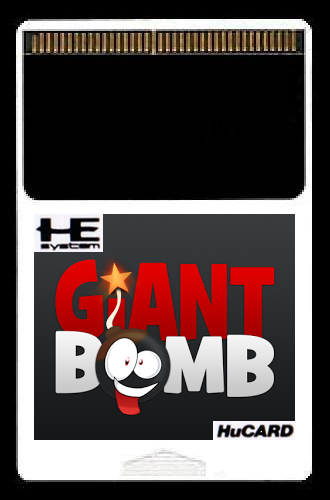
When I concluded last year's Octurbo feature, I decided that I didn't have it in me to go for a third run this year. Well, to be more accurate, I didn't think I had enough left to draw from to create another month's worth of articles. While I'm still a fair distance away from thoroughly exhausting the TurboGrafx-16's library, even if I were to stick with its limited US output, I feel like I've covered all the major stops already.
Instead, I've decided to let the TG16 go out on one last hurrah with this new Wiki Project. NEC and Hudson's little-console-that-couldn't fell to the wayside competing against its more powerful peers the Super Nintendo and the Sega Genesis, its tardy international release putting it right up against Sega's powerhouse in August of 1989. While it was successful enough in its homeland as the PC Engine, it only saw a relatively tiny library of 94 games for its US incarnation. Ensuring we have 94 wiki pages replete with overviews, screenshots, releases and header images isn't too Herculean a task, especially when compared to filling out the hundreds of pages required for any given year for the NES or SNES.
I usually go with scattered highlights for these Wiki Project summaries, but for this one I'm going to go through the entire list. Fortunately, I have my previous TurboMento and Octurbo work to invoke for a lot of what follows. I'll provide a basic appraisal of the rest from any information gleaned while filling out their pages. This is to be the TG16 blog to end all TG16 blogs, freeing up my Octobers for something a little more... contemporary. (Which I guess means the Sega Saturn. Saturnber? I'll have to workshop that.)
(I also intend to do something similar for the 45 TurboGrafx-CD games further down the pipeline. Obviously, getting screenshots for those games is proving to be a little more problematic. As for the 700+ PC Engine games? Well, they're going to have to wait for another day. It's not like I can understand most of them.)
1989
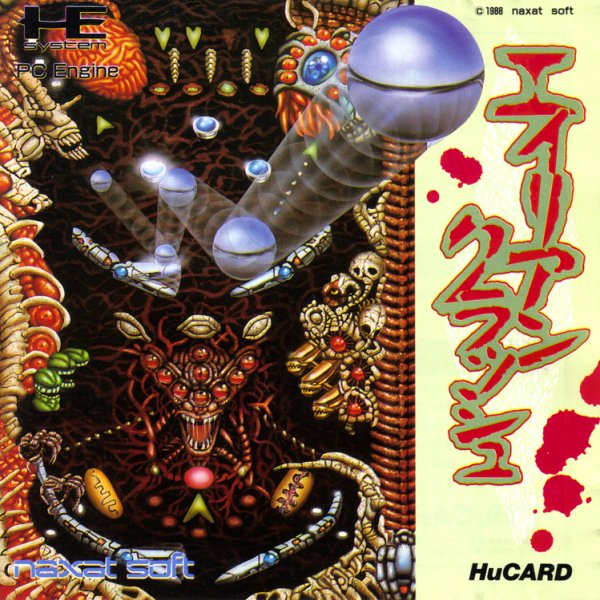 | Xenomorph pinball, and one of two Crush games for the TG16. Covered in Octurbo. (PC Engine release: 09/14/1988.) |
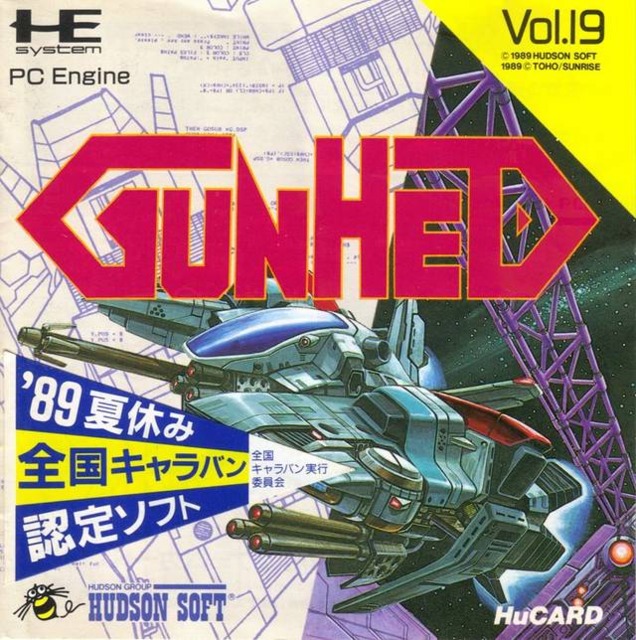 Blazing Lazers (Gunhed) | A vertical shoot 'em up thought to be a spin-off of Hudson's Star Soldier series. Probably the best regarded shoot 'em up on the system. Covered in Octurbo. (PC Engine release: 07/07/89.) |
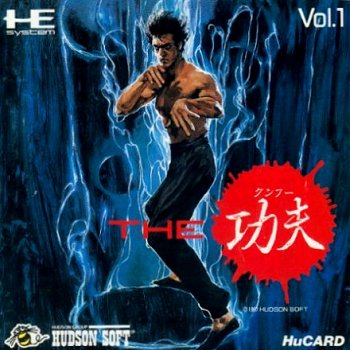 | So yeah, this thing. It's been theorized that Hudson wanted to recreate Irem's Kung Fu Master, the classic NES brawler, but in a way that emphasized the 16-bit graphical power of the TG16 by making the player character and his opponents gigantic, detailed sprites. They didn't quite spend enough time making sure the game didn't suck, however. While I didn't feel like dedicating an Octurbo to it, you can watch the Bomb Squad play this one in their VinnyVania/PC Engine mash-up. (PC Engine release: 11/21/87.) |
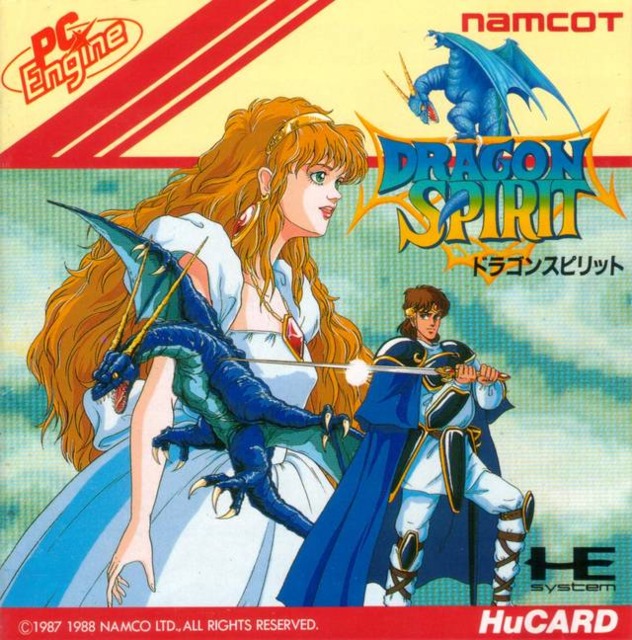 | Dragon Spirit's an early Arcade conversion, a Namco shoot 'em up featuring dragons and more dragons. It came out on other stuff too, notably the C64 and as a weird pseudo-sequel on the NES. Instead of upgrading one's guns, like you would in a spaceship shmup like Gradius or R-Type, your dragon grows more heads and changes color. I mean, dragons, right? There really aren't any rules when it comes to what dragons can and cannot do. (PC Engine release: 12/26/88.) |
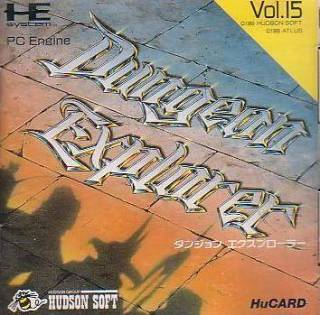 | Top-down RPG-slash-Gauntlet clone. Like Gauntlet, it appears to be more fun with multiple people. Covered in TurboMento. (PC Engine release: 03/04/89.) |
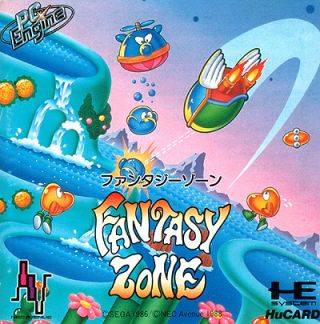 | Now, what might a Sega game be doing on a rival platform? Well, they weren't too stringent with their Arcade properties back then, and you'll see a number of Sega games (including this one) also show up on the NES. It wasn't really until Sega started doubling down on their consoles that they started being a little more miserly with their first-party games. Fantasy Zone's a cute 'em up that plays a little like Defender (but, you know, cuter). (PC Engine release: 10/14/88.) |
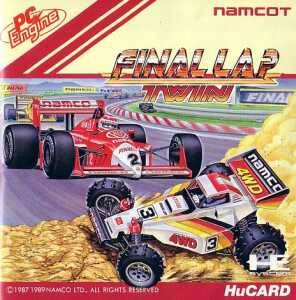 | There was a phase in the late 80s, spurred by the success of Famicom RPG hybrids, where a lot of game developers were experimenting with adding RPG elements to other genres. While it eventually lead to classics like Zelda II or Symphony of the Night, most of the time the formula wasn't quite right and we ended up with a number of figurative flipper babies like Final Lap Twin. I'm really not sure an RPG overworld is necessary for a F1 driving game. (PC Engine release: 07/07/89.) |
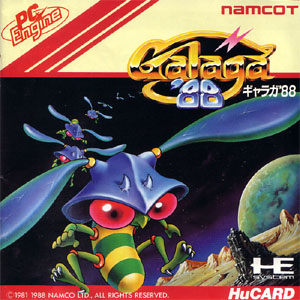 | Galaga probably needs no introduction. It's the quintessential Taito Arcade shoot 'em up. The '88 version, which got bumped up a couple years for its US release, is a combination remake/sequel that adds a few new features but tries not to rock the boat too much. You don't really want to screw up Galaga if you can help it. It'd be like drawing a mustache on the Mona Lisa. (PC Engine release: 07/15/88.) |
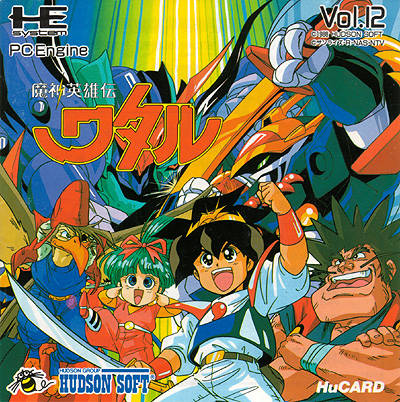 | The amazingly titled Keith Courage is actually based on an anime, which is perhaps apparent enough when your Sentai-costumed hero turns into a mecha after riding a rainbow bridge about five minutes into the playthrough. Covered in Octurbo. (PC Engine release: 08/30/88.) |
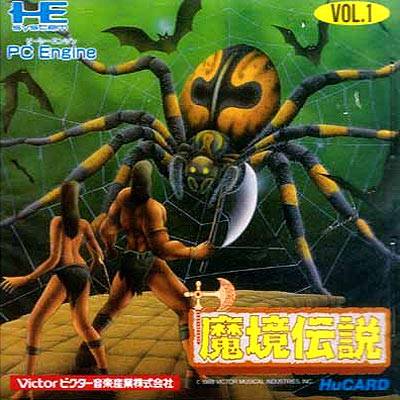 | Side-scrolling action game like Rastan or Volgarr, with an appropriately shirtless barbarian hero. Despite the straightforward violent nature, the game rewards patience, allowing you to land stronger hits by waiting a few seconds for the power bar to refill. Covered in TurboMento. (PC Engine release: 09/23/88.) |
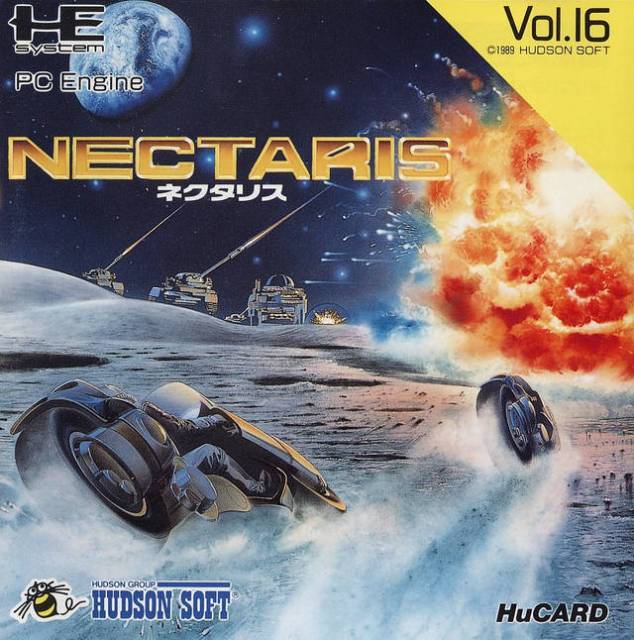 | A military strategy game not unlike Advance Wars. Build units, fortify structures, overpower the opponents. It's basic enough to not be the usual headache you get with these turn-based strategy games, but complex enough to give you a challenge. The US only saw this one and its 2009 reboot, but the Nectaris series is quite prolific in Japan. (PC Engine release: 02/09/89.) |
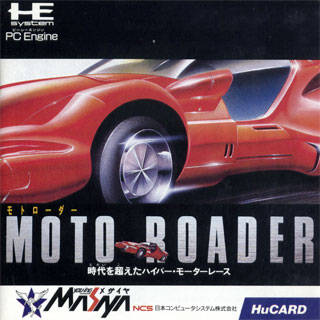 | Top-down racing game, similar to Micro Machines. Does that weird rubberband thing common to games that use this perspective, pushing forward those at the back so everyone can stay on the same screen. It's five-player, so split-screen wouldn't really work. (PC Engine release: 02/23/89.) |
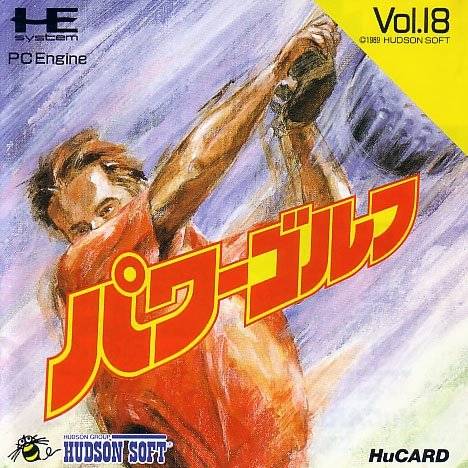 | It felt like every console library in the 8-bit era had its own first-party sports series. The NES had mononymous titles like Golf and Tennis, the Master System had the "Great Sports" series and the TurboGrafx had Hudson's own "Power Sports" series. Almost all the Power games were renamed for their US releases, except for this one. Needless to say, it's a golf game, and a fairly average one at that. (PC Engine release: 05/25/89.) |
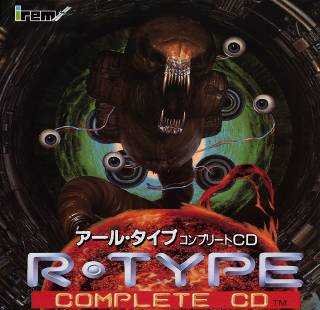 | One of the better early conversions of Irem's iconic shoot 'em up R-Type, the Japanese PC Engine version was actually split into two separate releases because they couldn't fit the whole thing onto a single HuCard. Cart technology had advanced sufficiently to sidestep that problem for its eventual US release. (PC Engine release: 1989 [two releases].) |
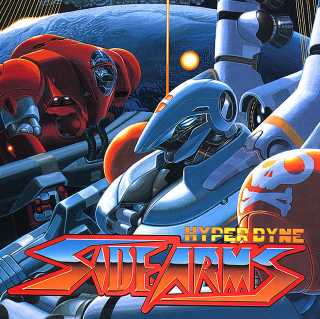 | Arcade mech shoot 'em up from Capcom. The TG16 had a lot of shoot 'em ups, by the by. Capcom essentially built on their earlier humanoid shmup Section-Z and added a feature where you could power up by combining with other mechs like Voltron. (PC Engine release: 07/14/89.) |
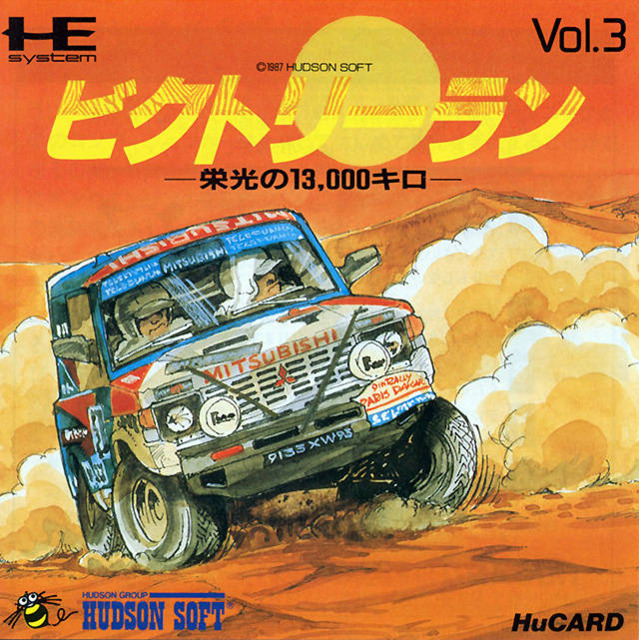 | Standard OutRun style racing game, with a bit of a rally car simulation aspect. You have to make sure not to break down, and to keep replacing parts that get busted. (PC Engine release: 12/28/87.) |
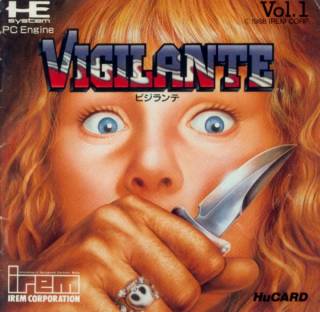 | The follow up to Kung Fu Master, Irem's Vigilante is closer to the blueprint that would dominate the brawler genre: gritty city streets, endless criminal goons and a hero chasing after his kidnapped girlfriend. Final Fight and Double Dragon were based on this formula. Jeff and co. played a little of it in the aforelinked VinnyVania/PC Engine crossover. Oddly enough, both this and Kung Fu Master were based on the same Jackie Chan movie: Wheels on Meals (named Spartan X in Japan). (PC Engine release: 01/14/89.) |
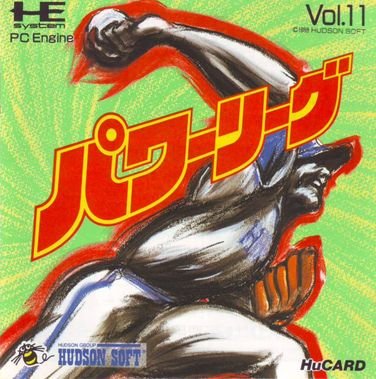 | Another Power Sports game, this time for baseball. Yeah, ask me anything about baseball games. If you liked this one in particular, there are two more Power Leagues for the PC Engine, and four Super Power Leagues for the Super Famicom. (PC Engine release: 06/24/88.) |
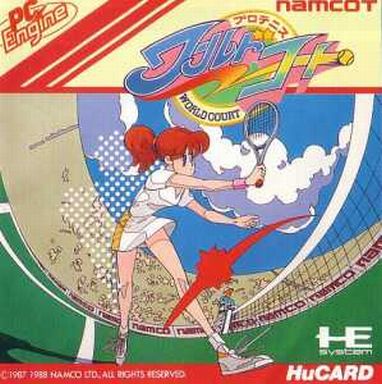 | A rarity at the time, this is a multiplayer tennis game for up to four people. The TG16 pioneered a lot of 2+ multiplayer modes for their games, going up to five in a few of cases, though obviously this was best implemented in the Bomberman series. (PC Engine release: 08/11/88.) |
1990
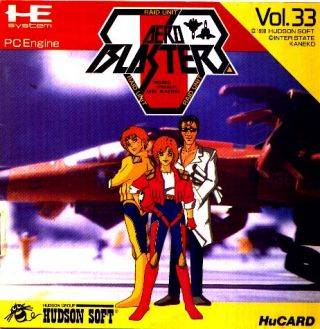 | A side-scrolling shoot 'em up with a great sense of speed. The game occasionally splits from blowing stuff up to forcing you to navigate narrow passageways while zipping down them a thousand miles per hour. It also came out on the Genesis as Air Buster, where its emphasis on speed could be better appreciated. (PC Engine release: 11/02/90.) |
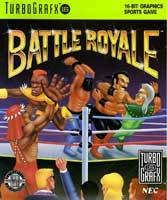 | An utterly bizarre wrestling game that's far more into the spectacle of pro wrasslin' than the actual combat. It's also a five-player Royal Rumble game with Smash TV rejects. I half-want Jeff and Dan to discover it, but I suspect the reason it's not come up on Giant Bomb yet is because it seems really bad. (No PC Engine release.) |
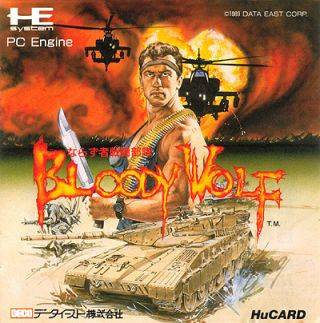 Bloody Wolf | A top-down Commando/Ikari Warriors style shooter, with some of the most hilariously bad dialogue this side of Last Alert, which managed to one-up it with its equally bad voice-acting. Covered in TurboMento. (PC Engine release: 09/01/89.) |
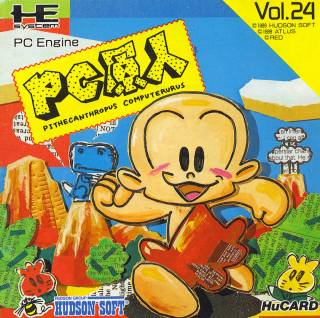 | The unofficial TurboGrafx mascot, Hudson's Bonk is a caveman (or cavebaby?) with an enormous cranium, exceptional teeth and an evident high tolerance to pain. Though it seems like a run of the mill prehistoric platformer, it's actually packed with surprises. Covered in TurboMento. (PC Engine release: 12/15/89.) |
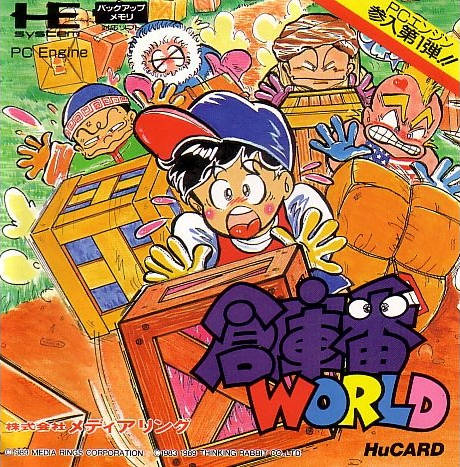 | Sokoban, or Warehouse Worker, is a puzzle game that took over Japan in the same way Lemmings did over here for a time. It's simply pushing boxes onto designated areas, but the difficulty is factored in by how boxes can only be pushed and not pulled, which makes it very easy to inadvertently screw yourself over. It becomes a game where you have to think several moves in advance, or simply ensure that you never push a box to a spot where it cannot be pushed back. Boxyboy is effectively identical to its cousins. (PC Engine release: 03/16/90.) |
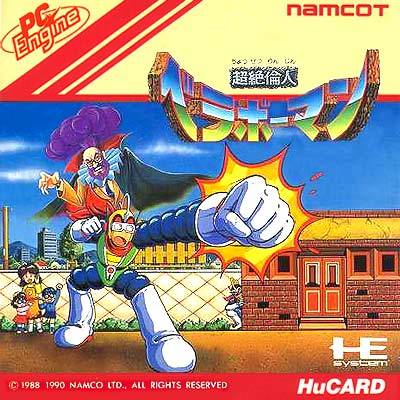 | A superhero (called tokusatsu in Japan, referring to shows like Kamen Rider or Power Rangers) parody, Bravoman is a hero with telescopic limbs forced to fight a bizarrely-coifed evil professor at the behest of his alien pal Alphaman. Covered in Octurbo. (PC Engine release: 07/13/90.) |
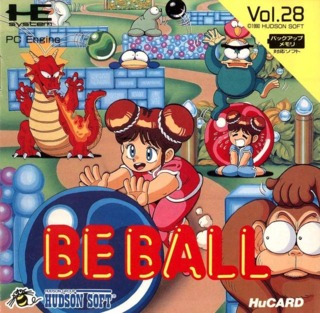 | A vaguely racist puzzle game involving the pushing of spheres around mazes. Unlike Sokoban, you could push and pull these balls (why do I hear laughter?) and send them around corners. Covered in Octurbo. (PC Engine release: 03/30/90.) |
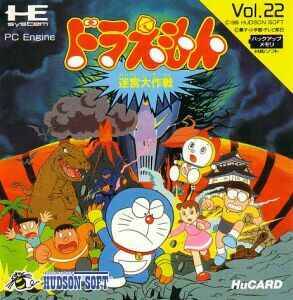 | A top-down maze game similar to Pac-Man, though it's thankfully a little more involved. The player uses gadgets to escape monsters, or buries them in a style similar to Heiankyo Alien. Was actually a Doraemon game at one point, but the robotic cat wasn't really a known quantity in the States at the time. Still isn't, I suppose. Covered in Octurbo. (PC Engine release: 10/31/89.) |
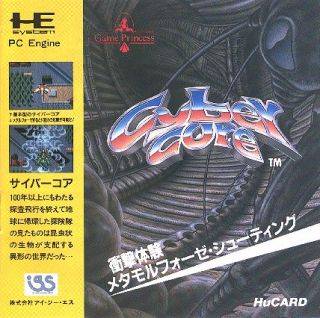 | Did I mention that the TurboGrafx-16 was lousy with shoot 'em ups? This one's got kind of a Galaga vibe to it with all its insectoid enemies and the player's shapeshifting biomechanical ship. (PC Engine release: 03/09/90.) |
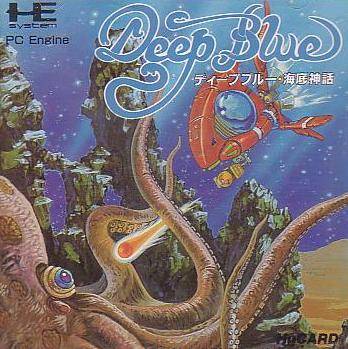 | An aquatic-themed shoot 'em up that squanders its interesting visual style with its rudimentary and far too harsh gameplay. It was fortunate enough to be recently featured on Hardcore Gaming 101's "Your Weekly Kusoge" series. (PC Engine release: 03/31/89.) |
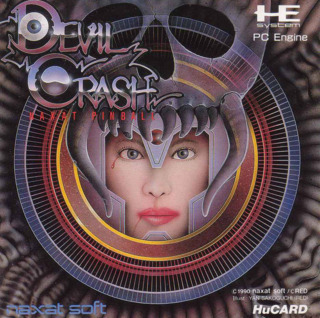 | The sequel to Alien Crush and another decent pinball game on the TurboGrafx-16 with a disturbing theme. This time it's all demons and Doom business. (PC Engine release: 07/20/90.) |
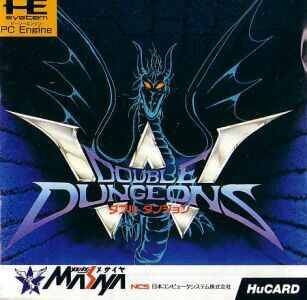 | I'm sure this wasn't intentional, but Double Dungeons takes the generic first-person dungeon-crawling made popular by Wizardry and seems to deconstruct the format to its base elements, creating a sort of puzzle game where you have to approach every dungeon in the correct sequence of events (defeat low-level monsters, get better items, defeat stronger monsters, etc.). It's pretty odd, but also very repetitive. Covered in Octurbo. (PC Engine release: 09/29/89.) |
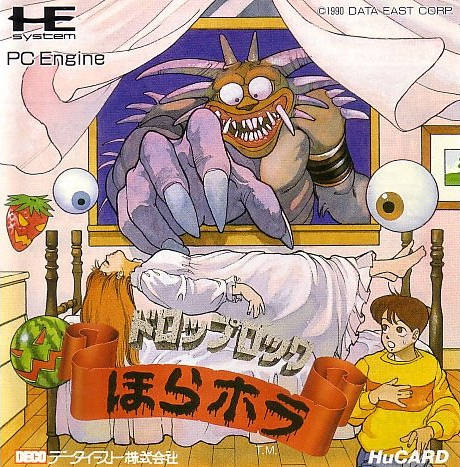 | There's no hints in the game's title as to what this is about, but if you guessed "Bust-a-Move knock-off" then you're probably already familiar with Cream's puzzle game. The title actually refers to the fact that you've been magically transplanted into a coma victim's dreams to help them recover. (PC Engine release: 03/30/90.) |
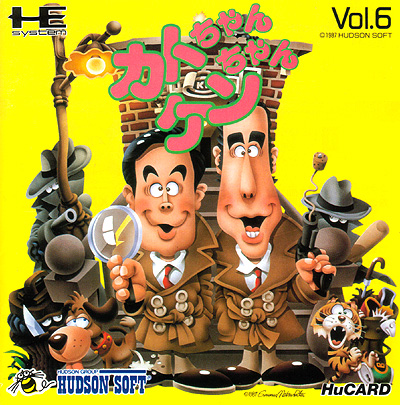 | The infamously scatological platformer Kato-chan & Ken-chan was made a little more palatable with its non-descript US facelift, but that also served to take away the only part of the game that was interesting. Filled with jokey non-sequitur special areas and background details, the game feels more like a parody than an actual game, not unlike a certain other game "designed" by a Japanese comedian: Takeshi no Chousenjou. Covered in Octurbo. (PC Engine release: 11/30/87.) |
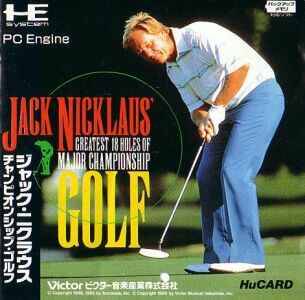 | The Japanese word salad title ("Jack Nicklaus's Greatest 18 Holes of Major Championship Golf") is actually what the game is called on other systems. They just renamed it Turbo Golf for the TurboGrafx because... I guess I don't really need to finish that sentence. If you're hurting for more TG16 golfing after Power Golf, you'd best enjoy this because it's the only other one. (The PC Engine, though? Golf for days.) (PC Engine release: 11/24/89.) |
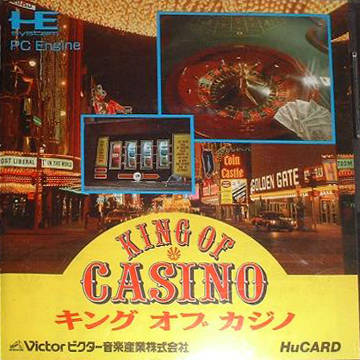 King of Casino | A gambling game. All the fun of the casino, none of the risk. I imagine that's the idea, because gambling without any actual money involved seems profoundly pointless. (PC Engine release: 03/30/90.) |
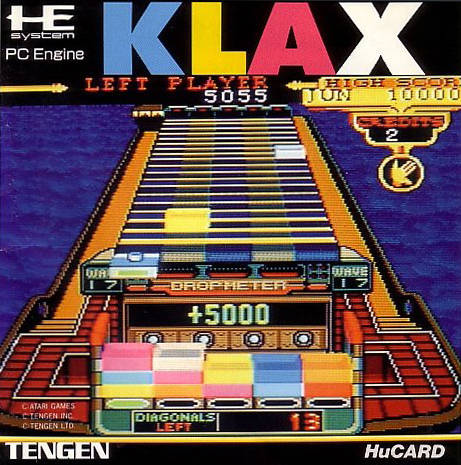 | The ubiquitous block juggling game also saw a TurboGrafx-16 version. I actually suspect that AudioSurf took a lot of its aesthetic from Klax, from the block stacking right down to its neon conveyor belts. (PC Engine release: 08/10/90.) |
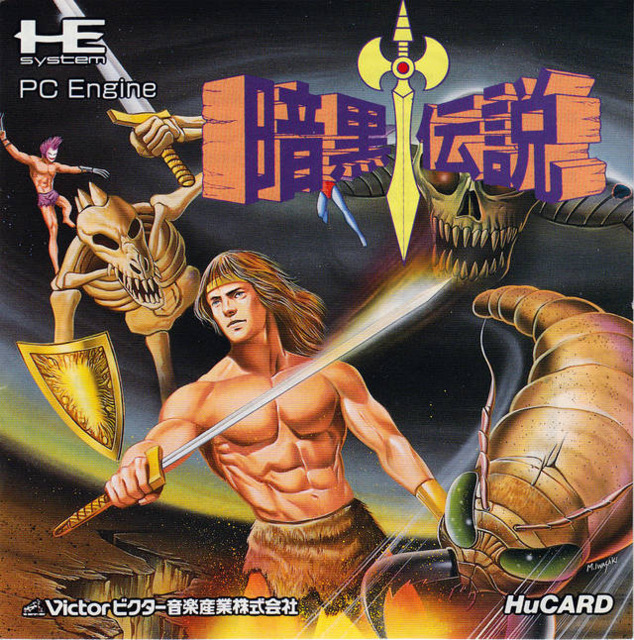 Legendary Axe II (Ankoku Densetsu) | The follow-up to one of the better received TG16 launch titles, and really more of the same. Your hero gets kicked off the top of a castle at the start of the game, so it gets pretty real right away. (PC Engine release: 09/07/90.) |
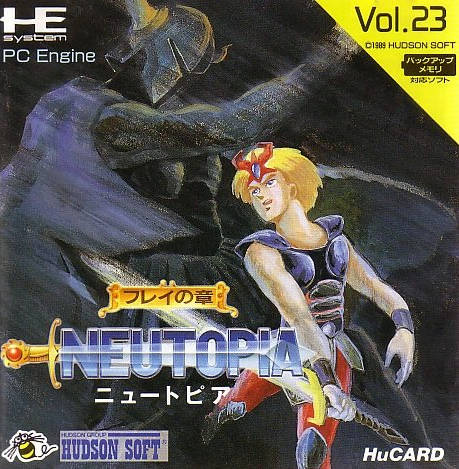 | Neutopia was Hudson's attempt at creating a Zelda equivalent for the console, in much the same way that Bonk was their version of Mario or Sonic. It's not a bad game, it even feels like the missing link between the original Legend of Zelda and Link to the Past, but you can't help feel a shudder go through your spine playing something so shameless. Covered in TurboMento. (PC Engine release: 11/17/89.) |
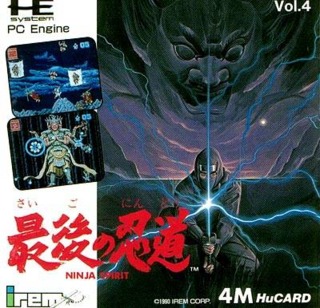 | A ninja action game that feels more like Ninja Warriors than Ninja Gaiden or Shinobi: far more emphasis on cutting through swathes of dudes instead of much in the way of platforming. Covered in TurboMento. (PC Engine release: 07/06/90.) |
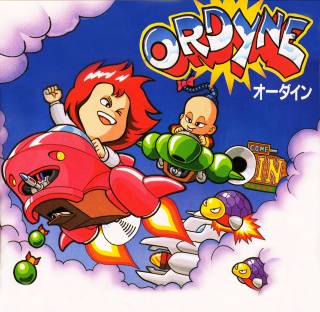 Ordyne | An oddball "cute 'em up", like Fantasy Zone, but with a subversive streak like Parodius. I guess when you have so many shoot 'em ups for a system, developers need to find a way to make theirs stand out a little. (PC Engine release: 09/08/89.) |
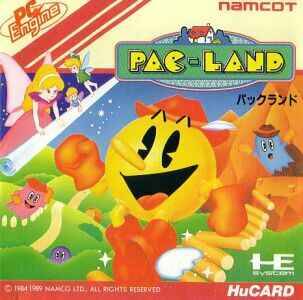 | Thought to be the precursor to all side-scrolling platformer games, Pac-Land is of historical significance but is rather too primitive to be appreciated these days. Still, it's the first case of what would become a very long running theme of Namco's: trying to transplant their most popular character into different types of game. (PC Engine release: 06/01/89.) |
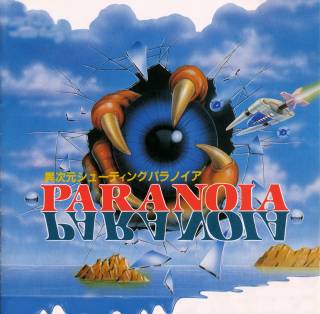 | An abstruse shoot 'em up, filled with bizarre imagery meant to invoke that of a tortured mental landscape. Like Drop Off (the TG16 had two games set within dreams?), the player is at the mercy of a very strange psyche. (PC Engine release: 03/01/90.) |
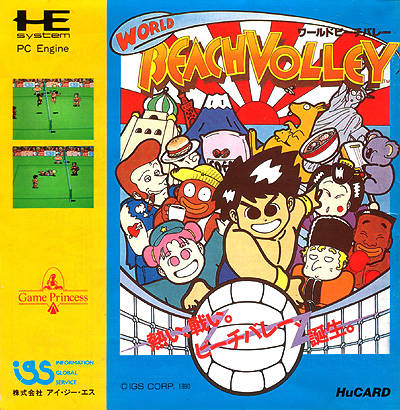 | Ticking off the various sports, we have ourselves a volleyball game. Oddly enough, it's one of two volleyball games that were released within months of each other. No hockey or football yet, and only one baseball game, but here's two volleyball games for ya. (PC Engine release: 07/27/90.) |
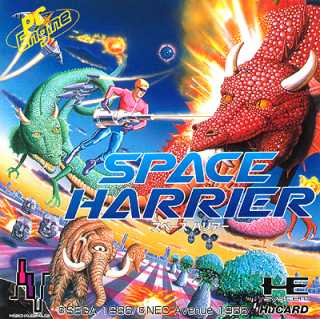 | Space Harrier is notorious for not porting well, with the sprite-scaling that gives it its distinctive sense of alacrity never quite translating thanks to the humble 8-bit console's lack of graphical power. The Genesis couldn't even manage it properly, so what hope does the TurboGrafx-16 have? Let me answer that: not much of one. (PC Engine release: 12/09/88.) |
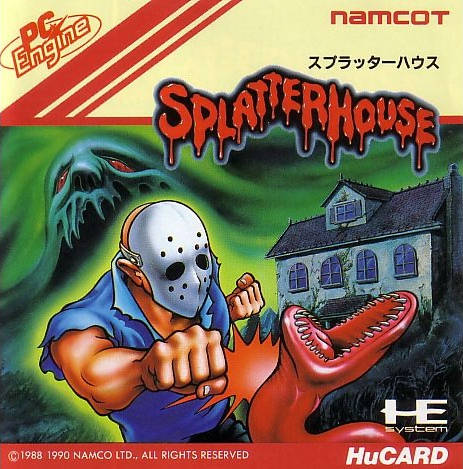 | Namco's absurdly gory horrorfest that honors so many slasher movies seems tailor-made for a Western audience, and the TurboGrafx-16 was the only system it appeared on in the US. It's a fairly standard brawler, but its visceral visuals are something else. Covered in Octurbo. (PC Engine release: 04/03/90.) |
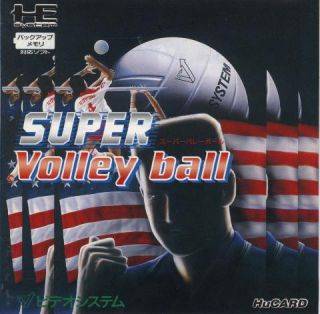 | Hey, here's that second volleyball game you ordered. (PC Engine release: 02/07/90.) |
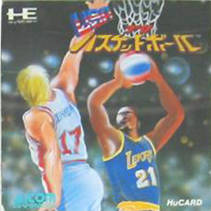 | A standard five-on-five basketball game, and one of the first to switch to an animated cutaway once a player got close enough to dunk the ball, a feature that would appear in many other basketball games. Simply uses city names in lieu of actual teams. (PC Engine release: 12/01/89.) |
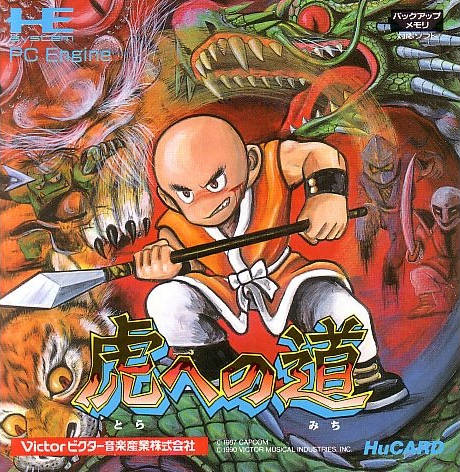 | An early Arcade Capcom platformer that feels like a mix of Kung Fu Master and something like Capcom's Magic Sword or Ghouls N' Ghosts. It's certainly no pushover. (PC Engine release: 02/23/90.) |
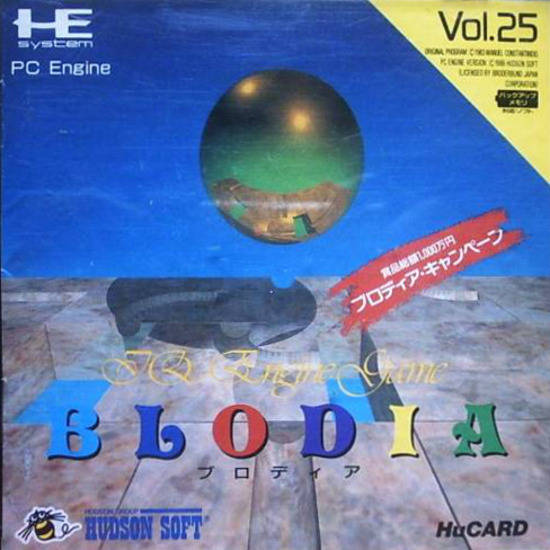 Timeball (Blodia) | An odd spin on Pipe Dream, in which you already have a grid full of pipe pieces and your task is to slide them around in much the same way as the sliding block puzzles that pervade every Professor Layton game. The goal is to keep the titular sphere in play long enough for the exits to open, and then navigate it out of the stage. (PC Engine release: 02/23/90.) |
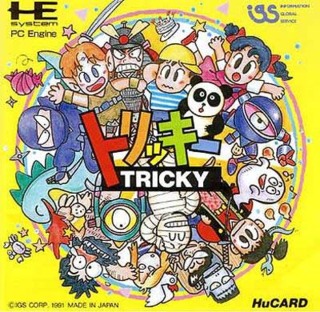 | A variation of Puzznic, the goal is to match similar symbols without messing up or having symbols left over (some need to be eliminated as threesomes). Tricky Kick's curious because it juggles multiple themes, making it an interesting game to categorize thematically on our wiki. Even though the game is extremely Japanese, it wasn't until about a year later that it was released for the PC Engine. (PC Engine release: 07/06/91.) |
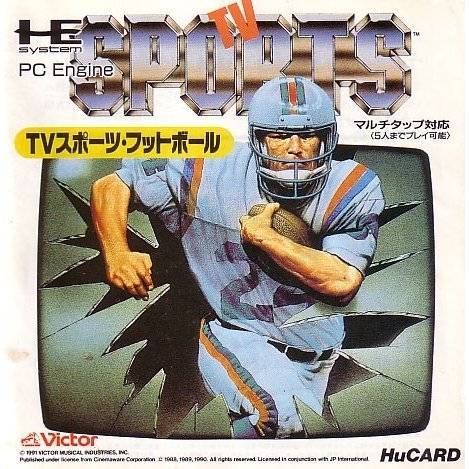 | The TurboGrafx's first football game, and the first in a franchise that attempts to depict various sports as if they were televised, complete with hosts and dramatic camera angles. The TV Sports series actually originated on the PC, and exist today as legal freeware. (PC Engine release: 03/29/91.) |
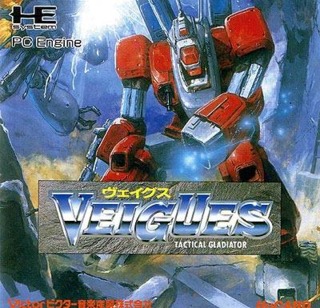 | A scrolling mech game, similar to Masaya's Assault Suits series (known variously as Cybernator and Target Earth). The player upgrades their mech between stages, emphasizing different stats depending on their play style. (PC Engine release: 06/29/90.) |
1991
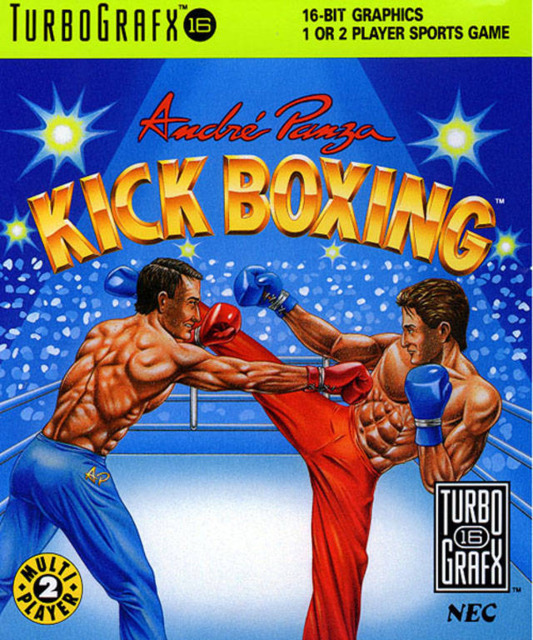 | That rarest of sports titles: a competitive kickboxing game. This one threw me for a loop when I worked on its page. When I started taking screenshots for it, it looked suspiciously familiar to another SNES game I'd worked on months ago. I was right, turns out, and this is simply another version of Best of the Best: Championship Karate. Of course, karate doesn't have a whole lot in common with kickboxing, except that you use your legs way more often than you would in regular boxing. I know, I know, I'm a whizz with martial arts. (No PC Engine release.) |
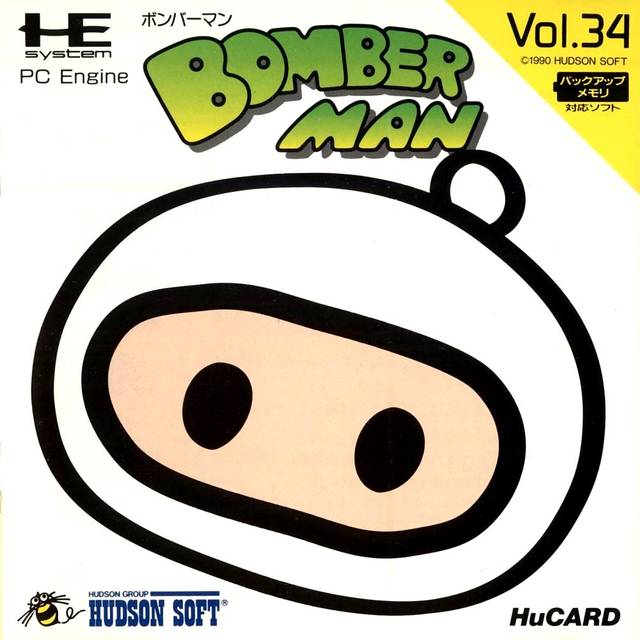 | We don't really need to go too deeply into Bomberman. It's a five-player party game in which you blow each other up. This is an acceptable adaptation of Hudson's original game, but it got eclipsed by the far superior Bomberman '93 and '94. (PC Engine release: 12/07/90.) |
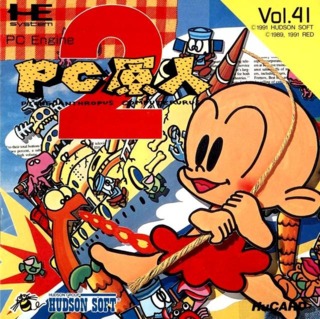 | Bonk's back, and this time, he's still hitting things with his head and eating meat. Bonk's Revenge doesn't do a whole lot new, but it's still a great sequel to an already great game. Covered in Octurbo. (PC Engine release: 07/19/91.) |
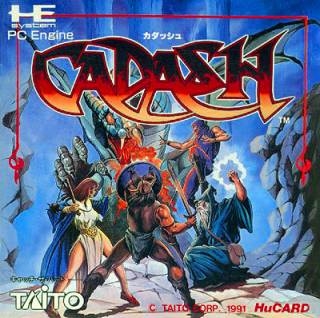 | A side-scrolling multiplayer Arcade action RPG from Taito. Not something you tend to see every day. Was also released on the Genesis. Covered in Octurbo. (PC Engine release: 01/18/91.) |
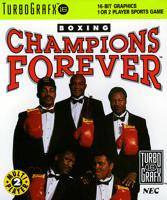 | A boxing game that depicts various heavyweight champions from the 70s and 80s, like Ali, Frazier and Foreman. Didn't seem particularly great. (No PC Engine release.) |
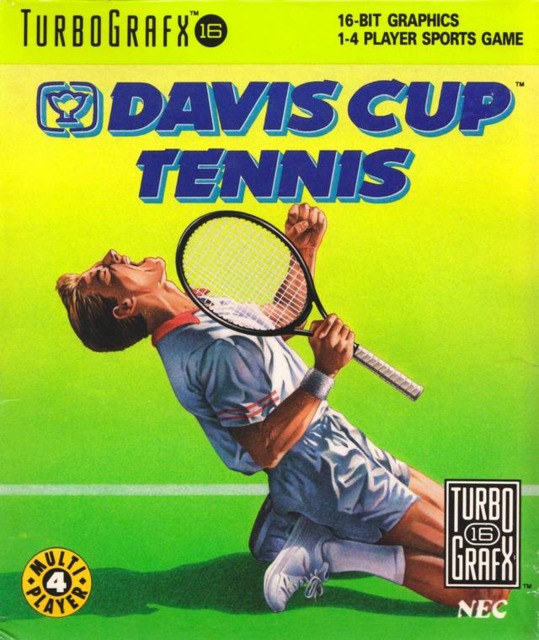 | More tennis, this time from French developer Loriciel(s). Unlike World Court Tennis it supports up to four players for its doubles mode. I believe the Genesis Davis-Cup Tennis is an enhanced version of the same game. (No PC Engine release.) |
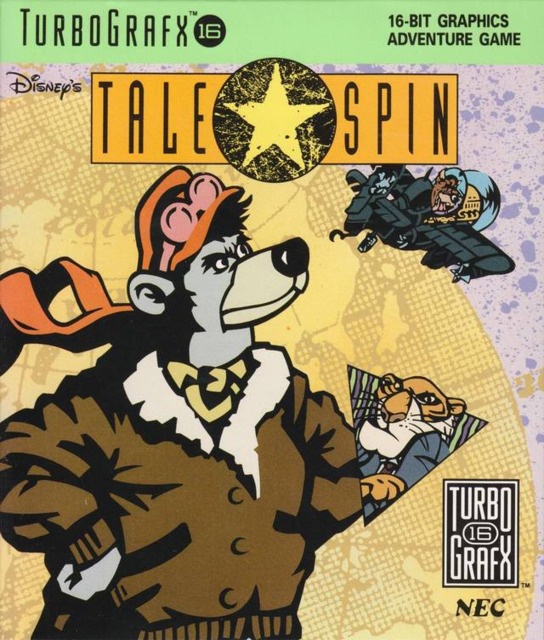 | Oh boy, don't ever confuse this Disney licensed platformer with the stellar work Capcom did with Disney properties on the NES. In comparison, this game is... well, what license games typically turn out like. (No PC Engine release.) |
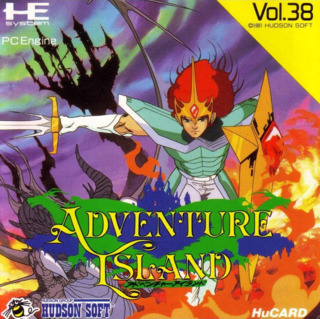 | Hudson and Westone have an unusual relationship. Hudson would frequently adapt their Wonder Boy games for other consoles, but because Sega is the original Wonder Boy publisher and license holder, Hudson often had to find ways to get around the name. That's how we got the original Adventure Island, Bikkuriman World and this game, which is simply the Master System's Wonder Boy III: The Dragon's Trap with a careful excision in its title. It's one of the best in the series, taking a SpaceWhipper approach to exploration and progression with its hero's frequent shapeshifting. Covered in Octurbo. (PC Engine release: 04/19/91.) |
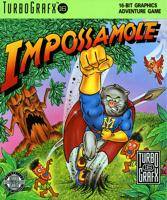 | One of the more unusual things to see on a US only console is a platformer best known in its home territory of Europe, as part of the Monty Mole series from UK developers Core Design. The sort of Amiga refugee you'd occasionally see on the Genesis, but rarely anywhere else. (No PC Engine release.) |
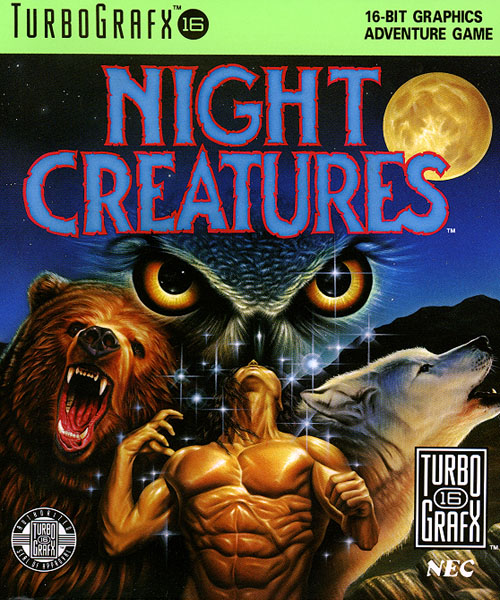 | Possibly another jab at a horror-themed brawler to follow Splatterhouse, there's some kusoge charm to this tale of a guy that gets bitten by a giant bat and decides to punch monsters. It really doesn't look great or play well. (No PC Engine release.) |
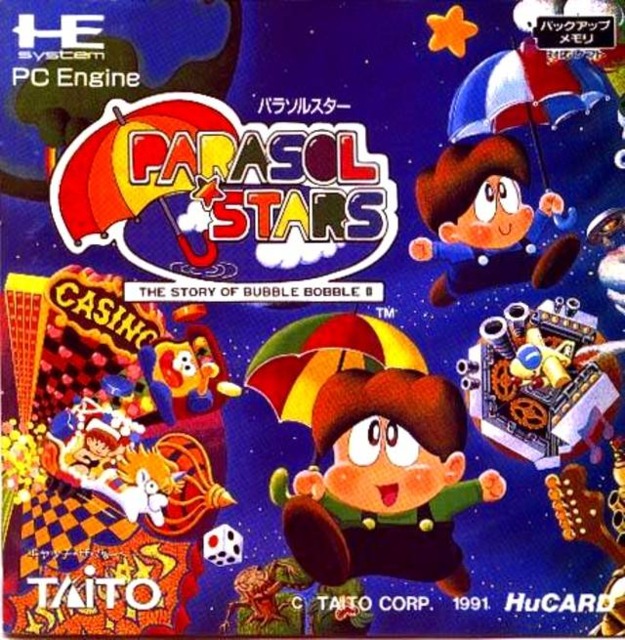 | Parasol Stars might be my favorite game in the Bubble Bobble/Rainbow Islands trilogy from Taito. It feels like a best of both worlds combination of its forebears, if anything. Covered in Octurbo. (PC Engine release: 02/15/91.) |
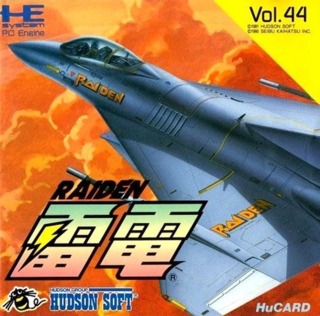 | A vertical shoot 'em up and an okay adaptation of the first game in the popular Arcade series. Further cementing the idea that the TG16 was the place to go for shoot 'em up conversions, at least for the time being. (PC Engine release: 11/22/91.) |
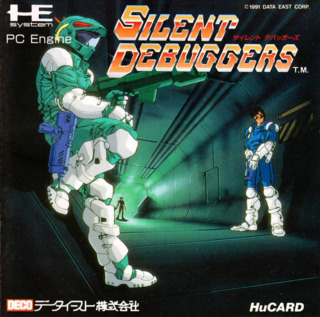 | An utterly bizarre first-person sci-fi horror game that has you shooting aliens in tunnels for 100 real-time minutes. Be my buddy. Covered in Octurbo. (PC Engine release: 03/29/91.) |
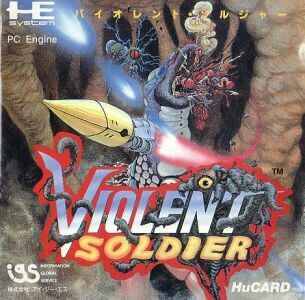 | Yet another horizontal shoot 'em up with a visceral, vaguely Giger-esque sci-fi design. (PC Engine release: 12/14/90.) |
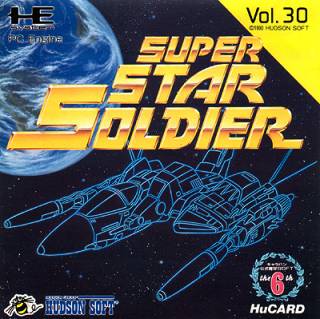 | Another sci-fi shoot 'em up and the first of three Star Soldier sequels unique to the TurboGrafx-16. For a time, Hudson put out one of these every year to be the chosen game for a national competitive high-score event. (PC Engine release: 07/06/90.) |
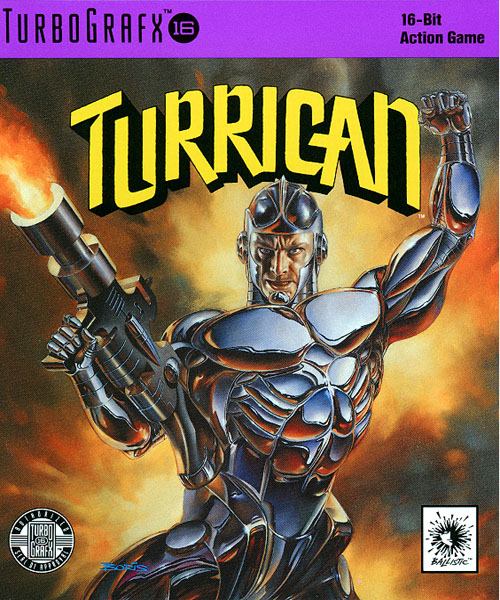 | Like Impossamole, Turrican's generally best appreciated by Amiga owners in Europe, so it's odd to see it get a release on a US-only platform like this. Fairly decent cyborg shooter with great music. (No PC Engine release.) |
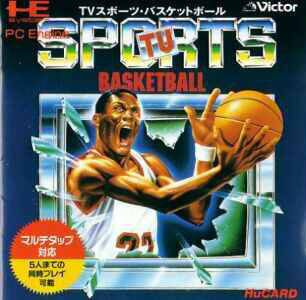 | The second TV Sports game to grace the TurboGrafx-16. Play as teams as diverse as the Ninjas, the Wizards, the Pirates or the Zombies. Oddly prescient, given how many of those four things are in video games these days. (PC Engine release: 1991.) |
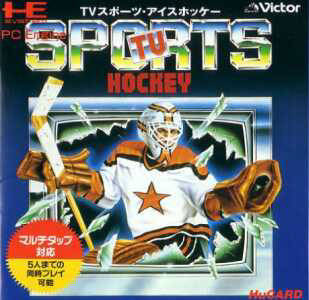 | The third TV Sports game on the console. Looks and plays very similar to EA's NHL series. (PC Engine release: 04/29/93.) |
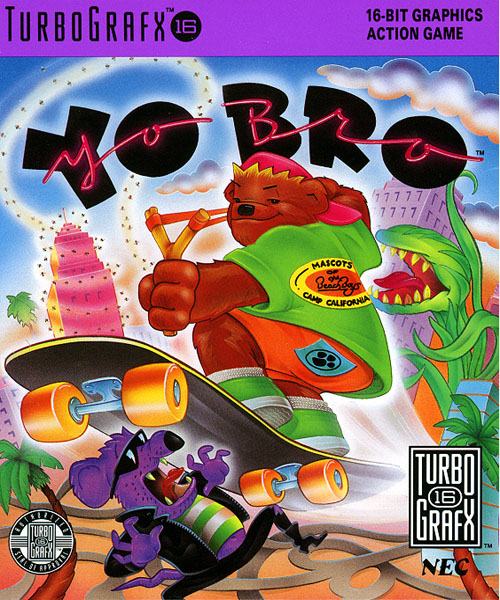 | Utterly perplexing "radical" skateboard game that plays surprisingly similarly to LucasFilm's Zombies Ate My Neighbors. Given that it's almost impossible to shoot anything while moving, one has to wonder why skateboards had to be involved. Covered in Octurbo. (No PC Engine release.) |
1992
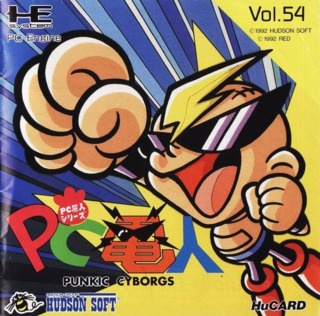 | A horizontal shoot 'em up featuring Hudson's Bonk character, "modernized" into a mohawk-sporting rockabilly cyborg. (PC Engine release: 11/20/92.) |
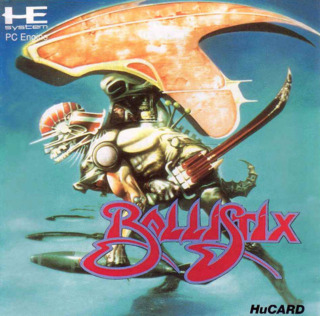 | Frenetically unplayable pinball-meets-Speedball future sports game from Psygnosis, and another weird example of an Amiga game hitting the TG16. Artwork by the guy who designed a lot of Iron Maiden's album covers. (PC Engine release: 12/13/91.) |
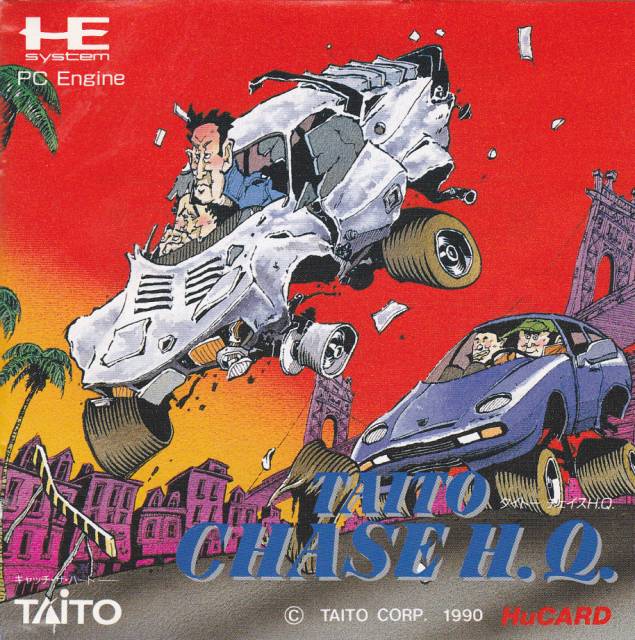 | Taito's well-liked Arcade cop driving simulator. Find the perp and crash into them a lot until their car breaks down. It saw a huge number of home conversions, including one for the TG16. (PC Engine release: 01/26/90.) |
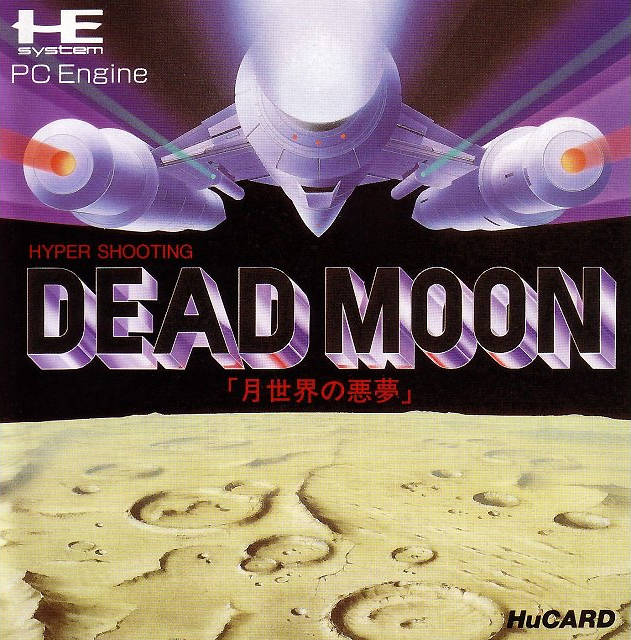 | Another sci-fi shoot 'em up with some trippy visuals. The moon's been hit by a comet packed with alien lifeforms, so you've been sent to sort them out before they spread to Earth. (PC Engine release: 02/22/91.) |
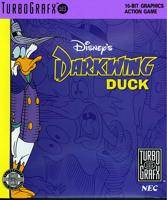 | Remember what I said about the TaleSpin licensed game? Pretty much the same deal here. Darkwing Duck is a great 90s cartoon, but it doesn't translate so well as a game. (No PC Engine release.) |
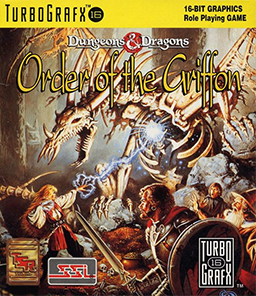 | A real curio, Order of the Griffon is set in the same universe as Capcom's Mystara Arcade brawlers and uses the SSI Gold Box combat engine. Weirder still, it uses the most basic D&D ruleset from the 70s rather than anything more contemporary. Despite looking like a PC game port, it's completely exclusive to the TG16. (No PC Engine release.) |
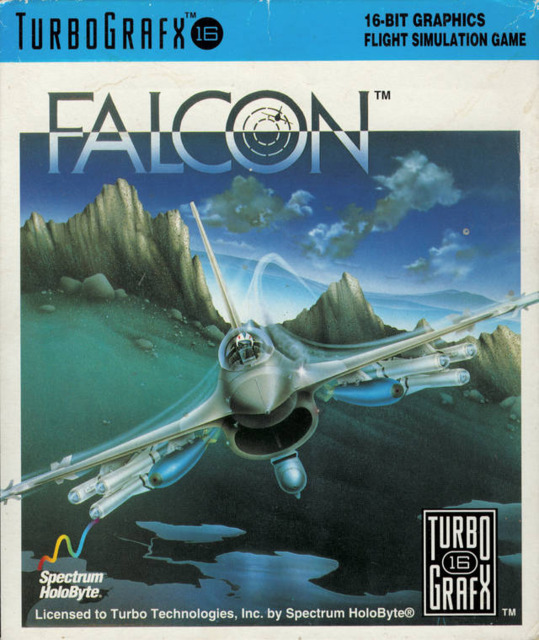 | Another PC game conversion, Falcon is the first in a long line of intimidating F16 jet fighter simulators of the type that uses a first-person view of a cockpit with way too many flashing digits and buttons to push. A Drew game, so to speak. Not quite sure how well something this complex really works with a two-button controller. (No PC Engine release.) |
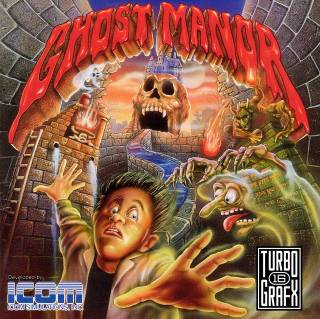 Ghost Manor | ICOM shifted gears after their critically-acclaimed MacVenture series (which includes Shadowgate, Deja Vu and Uninvited) to produce middling platformers for the TG16. This one contains more adventure game elements than its straightforward appearance lets on. Covered in Octurbo. (No PC Engine release.) |
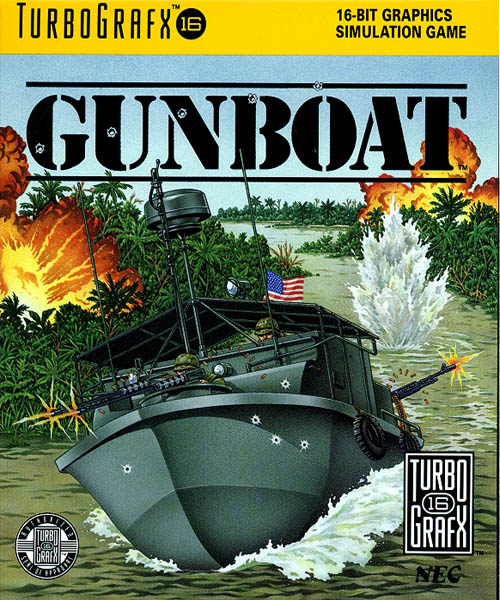 | Like Falcon, only it's a simulator for a PBR (Patrol Boat, River), those little gunboats you see in every Vietnam movie. (No PC Engine release.) |
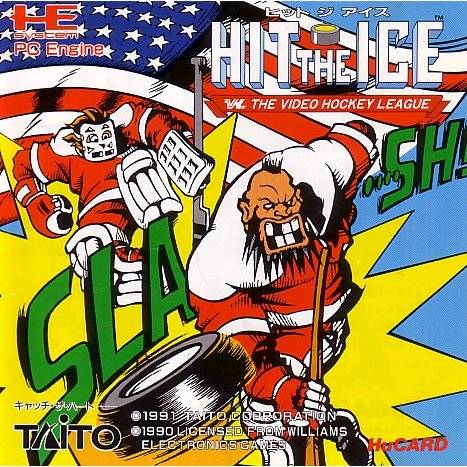 | The only other hockey game for the TG16. This one has more of a comedic bent to its visual style, and was also available for the SNES and Genesis. (PC Engine release: 09/20/91.) |
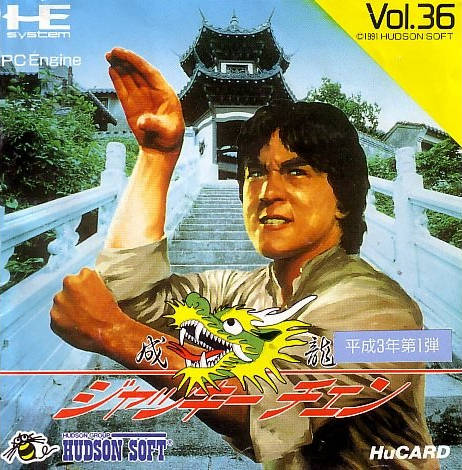 | A platformer featuring the Drunken Master of Slapstick Kung Fu himself, Jackie Chan. This version's a lot better looking than the NES one. Covered in Octurbo. (PC Engine release: 01/18/91.) |
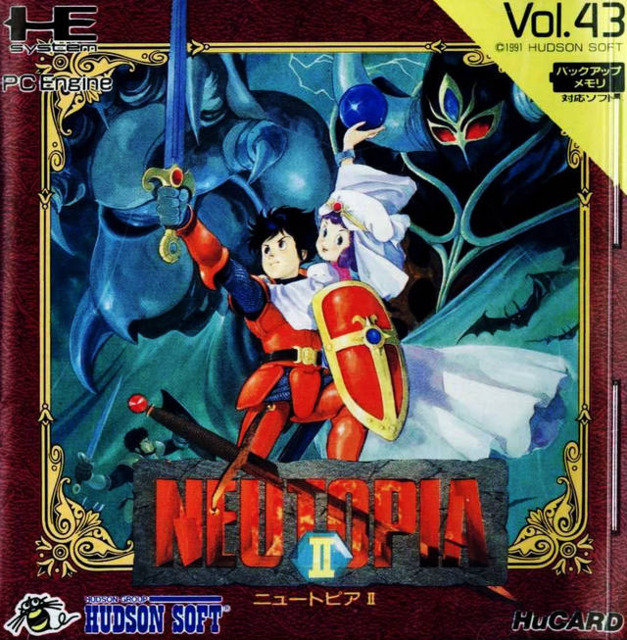 | The sequel to Neutopia. Doesn't rock the boat with major genre shifts, unlike Zelda II, and is simply a bigger and better clone of its predecessor. Covered in Octurbo. (PC Engine release: 09/27/91.) |
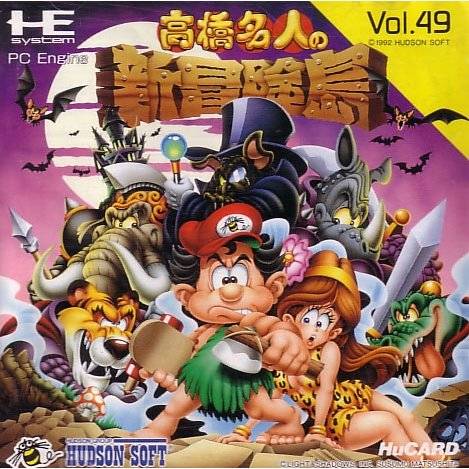 | Hudson's Master Higgins finally makes his TurboGrafx-16 debut in this new and improved take on the original NES game. It's his only appearance on the console, oddly enough, despite Hudson's heavy investment in the console. Covered in Octurbo. (PC Engine release: 06/26/92.) |
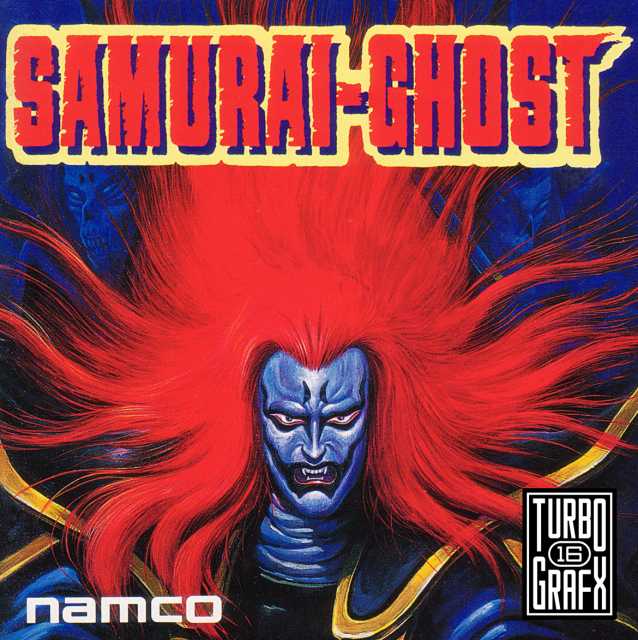 | The sequel to Genpei Touma Den, a.k.a. The Genji and the Heike Clans, about a spectral undead samurai who escapes the underworld to destroy his demonically-empowered rivals. Covered in Octurbo. (PC Engine release: 04/07/92.) |
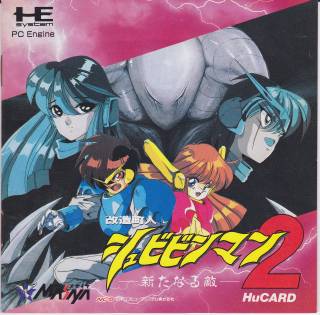 | Actually the second game in the unusually-titled Shubibinman series, featuring a pair of cyborg teens fighting to save their peace-loving city from total devastation. Very similar to Capcom's Mega Man series, though (like Bravoman) is kind of tongue-in-cheek about its genre tropes. Covered in Octurbo. (PC Engine release: 04/26/91.) |
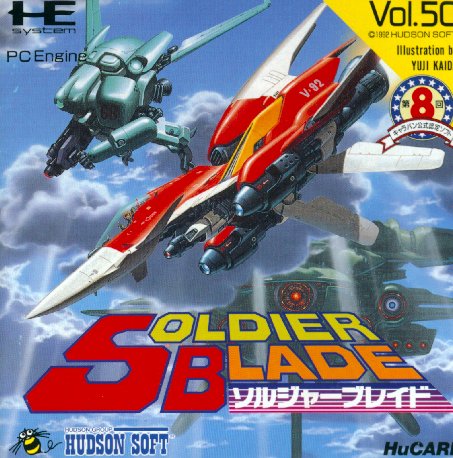 | The third of three Star Soldier sequels made especially for the TurboGrafx-16. The formula is well and truly established for this one. (PC Engine release: 07/10/92.) |
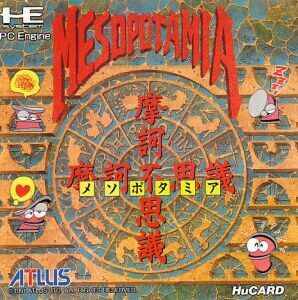 | Atlus takes a typically weird approach to a platformer/shooter game as a dexterous slinky takes on metallic beasts inspired by the signs of the Zodiac. Covered in Octurbo. (PC Engine release: 10/04/91.) |
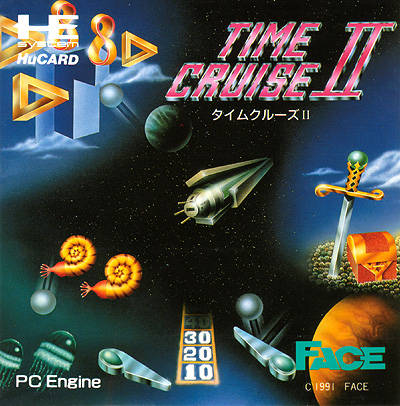 | A pinball game with multiple tables that can be traveled to horizontally as well as vertically. Activating time portals allows the player to complete mini-games for additional points and lives. (PC Engine release: 11/08/91.) |
1993
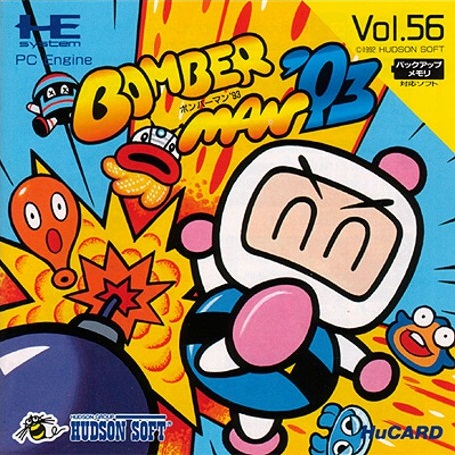 | The quintessential Bomberman game. Allows for up to five players. Considered one of the best Bomberman games to ever be released in the US, along with Super Bomberman 2 and Saturn Bomberman. Covered in Octurbo. (PC Engine release: 12/11/92.) |
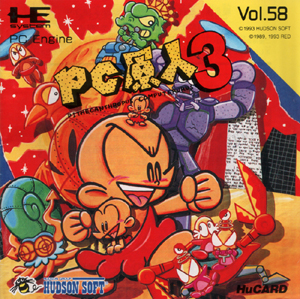 | Bonk's third adventure has a size-shifting gimmick, making Bonk either very small or very big. Was released in both HuCard and CD format. Covered in Octurbo-CD. (PC Engine release: 04/02/93.) |
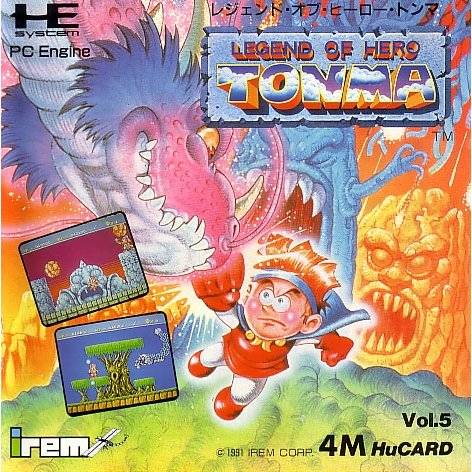 | An Irem Arcade platformer which, like Ghouls n' Ghosts, is no joke despite its cutesy graphics. Covered in Octurbo. (PC Engine release: 03/13/91.) |
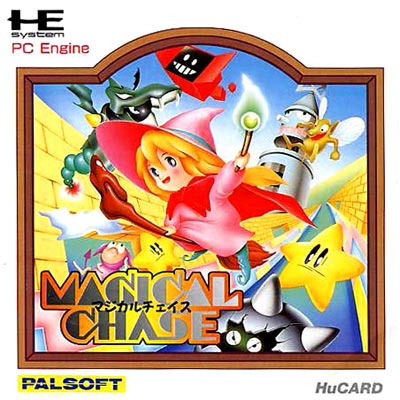 | A magical witch girl shoot 'em up. It's not even the only magical witch girl shoot 'em up either: the better known Fantastic Night Dreams: Cotton was released around the same time. It's also that one super-valuable game Jeff owns that he's somewhat reluctant to part with, even though it's worth around at least a grand to collectors these days. (PC Engine release: 11/15/91.) |
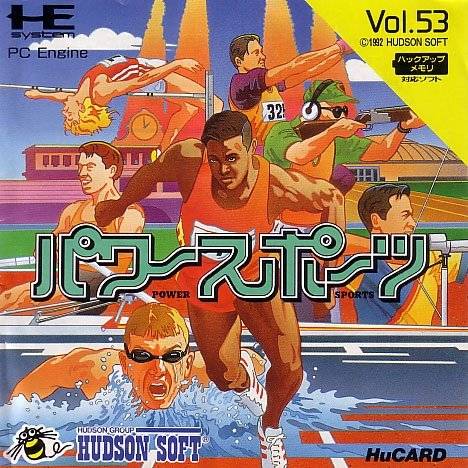 | Part of Hudson's Power Sports series, imaginatively titled simply "Power Sports" in Japan. This one is Olympics-themed, which means a lot of events you invariably must button-mash through to complete. (PC Engine release: 10/10/92.) |
Wii VC
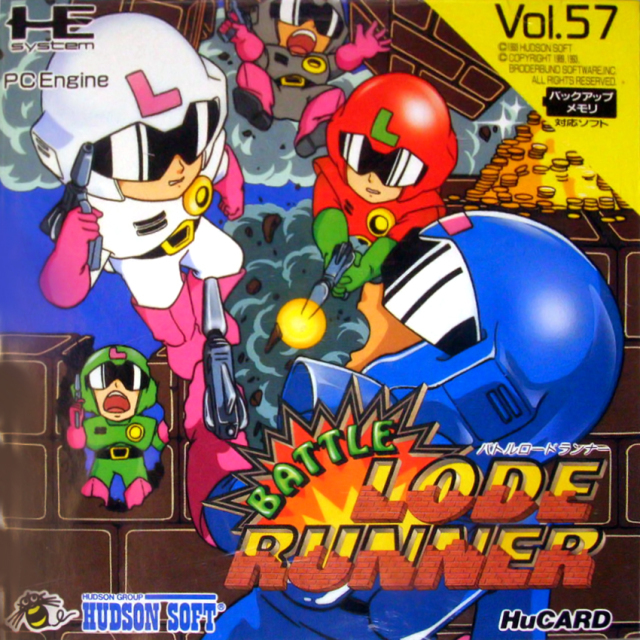 | This and the following six games were all PC Engine exclusive until they finally saw releases in Europe and the US as part of the Wii's Virtual Console library of TurboGrafx-16 games. Battle Lode Runner is an attempt to turn the classic puzzle game into a four-player competitive multiplayer like its spin-off, Bomberman. I can't say for sure how successful they were without a bunch of other people to test it, but it sure seems every bit as diabolical as the regular game. (PC Engine release: 02/10/93. US Wii VC release: 04/23/07.) |
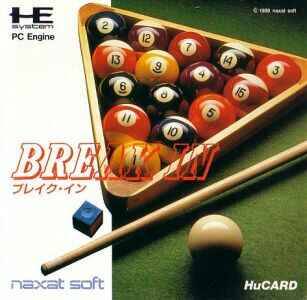 | A billiards game from Naxat Soft. Doesn't seem particularly interesting, but it does allow for up to six players. The single-player's story involves the wealthy passengers finding a stowaway, the player character, and all challenge him to games of pool or else they'll throw him overboard. At least I assume that's what happens when you lose. Would certainly give new meaning to the term "pool sharks". (PC Engine release: 08/10/89. US Wii VC release: 08/11/08.) |
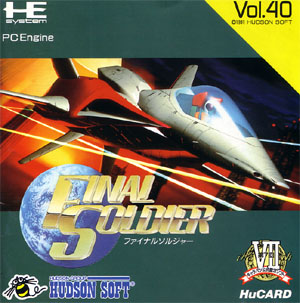 | The missing link in the Star Soldier series, fitting snugly between Super Star Soldier and Soldier Blade (both above). Final Soldier might actually be the best one of the three, annoyingly, given its deeper weapon hybrid system. It looks great too, really giving the TG16's tech a run for its money, but then all the Star Soldiers did to some extent. (PC Engine release: 07/05/91. US Wii VC release: 09/08/08.) |
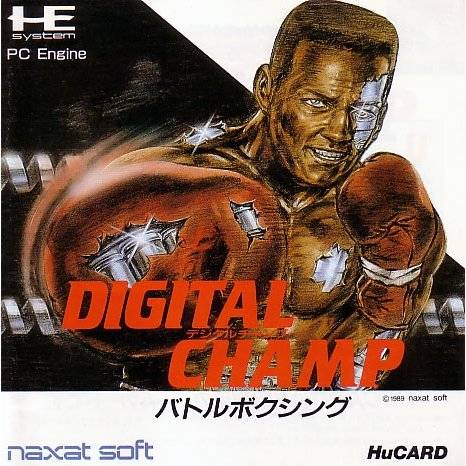 | The PC Engine's challenger to Punch-Out!!, going for that first-person boxing perspective. There's no multiplayer, of course, and you fight Rocky in the first stage, which seems a tad unfair if you ask me. (PC Engine release: 10/13/89. US Wii VC release: 10/20/08.) |
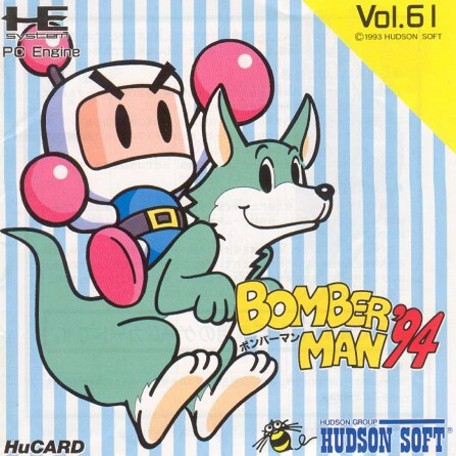 | While Bomberman '93 is lauded as one of the best Bomberman games ever made, it actually takes a backseat to this improved sequel. In addition to customizing your Bomberman for multiplayer, it has a whole bunch of new features, an improved single-player and the inclusion of those weird kangaroo things that would also show up in later Super Bombermans. (PC Engine release: 12/10/93. US Wii VC release: 03/23/09.) |
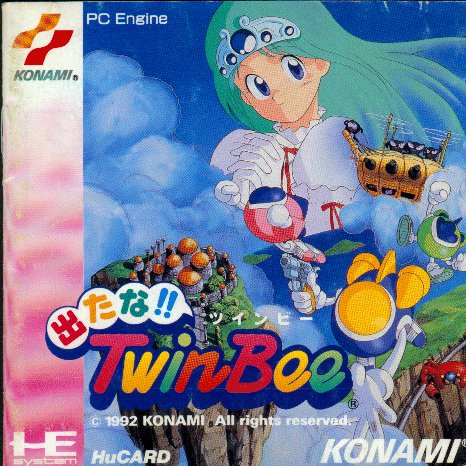 | A home console conversion of the one and only Arcade sequel to Konami's TwinBee. Like its forebear, it's a very colorful, very noisy cute 'em up take on Xevious. If you take damage, your arms get blown off and you can no longer attack ground targets with bombs. You can watch Jeff and Ryan commentate on it in this Game Room (though keep in mind they're playing the original Arcade version). (PC Engine release: 02/28/92. US Wii VC release: 03/23/09.) |
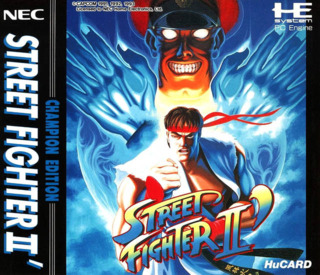 Street Fighter II': Champion Edition | The most recent of the Virtual Console rereleases, and a rather shabby port of everyone's favorite 16-bit fighter game. It's the same as the Genesis version, only a little less functional. It's another game that got a look in on that VinnyVania/PC Engine stream I linked to earlier. (PC Engine release: 06/12/93. US Wii VC release: 11/16/09.) |
Stay tuned for a much shorter list once I've completed the pages for every TurboGrafx-CD game. Until then: Holy crap was this a lot of text.

0 Comments